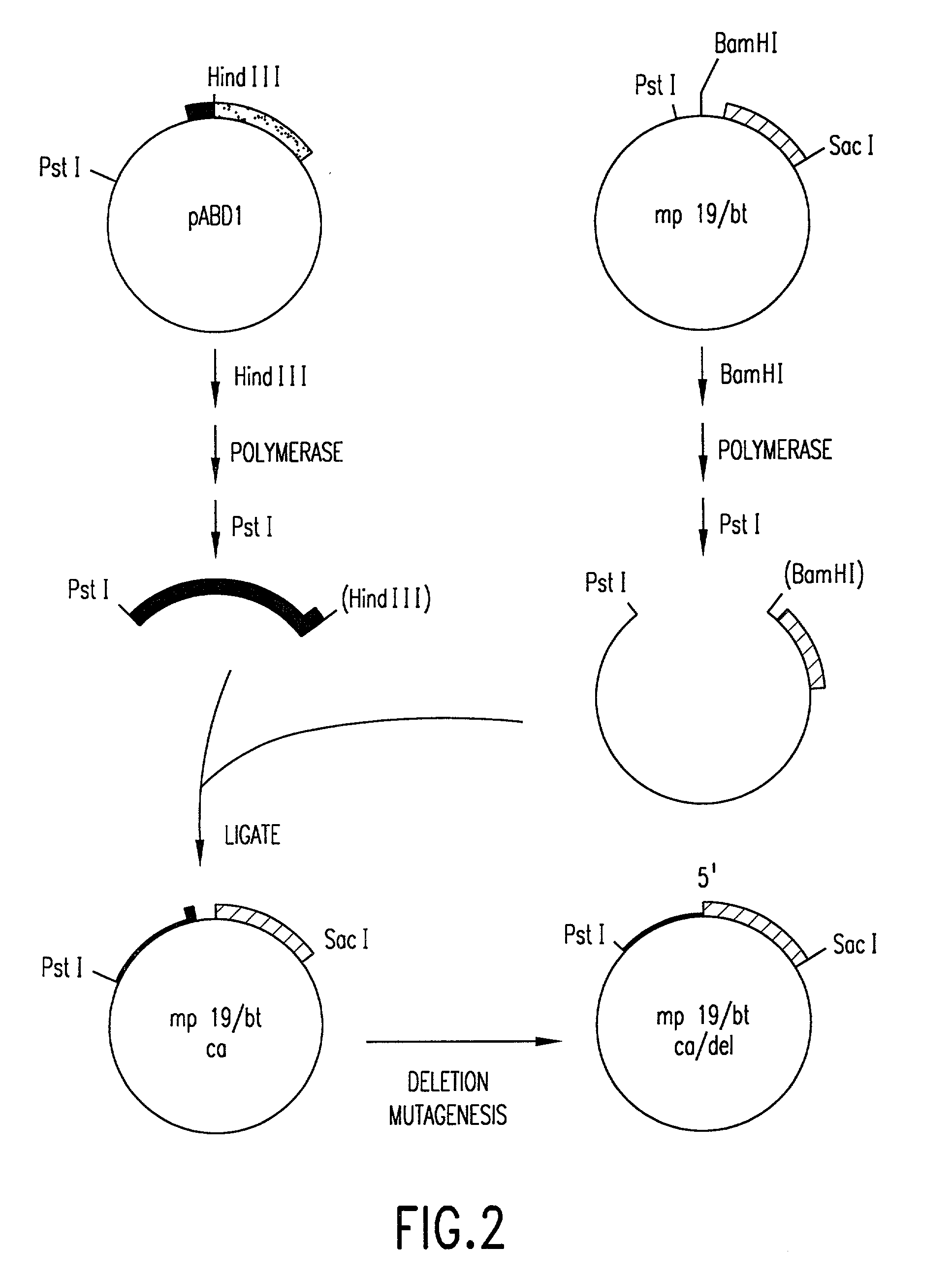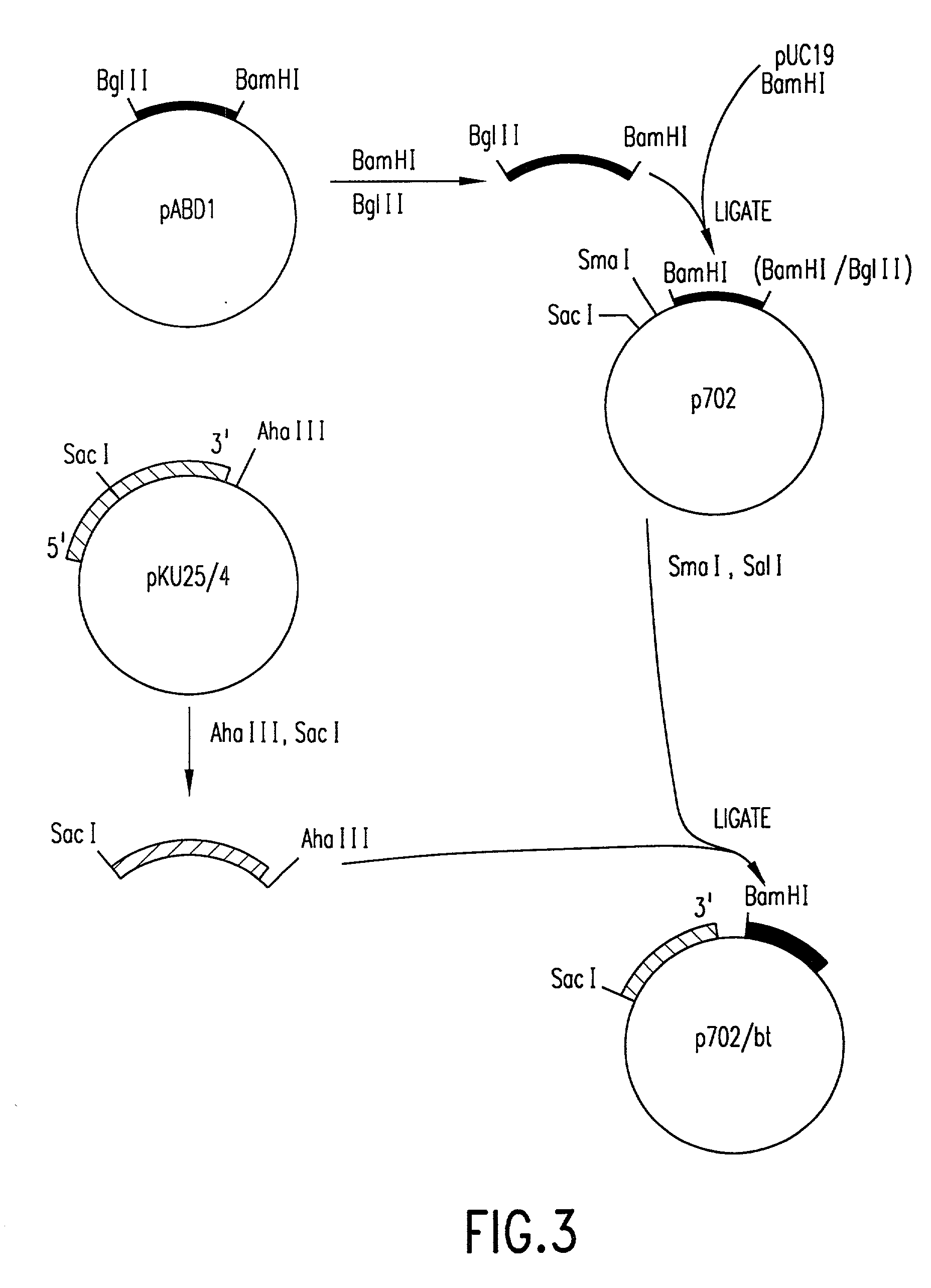Insecticidal cotton plant cells
a technology of insecticidal cotton plant cells and insecticides, which is applied in the direction of lysine, peptide, biochemistry apparatus and processes, etc., can solve the problems of not overcoming the disadvantages, frequent and expensive crystal protein application, and especially serious infestation of lepidopteran larvae, etc., and achieves the effect of sufficient efficiency
- Summary
- Abstract
- Description
- Claims
- Application Information
AI Technical Summary
Benefits of technology
Problems solved by technology
Method used
Image
Examples
example 1
General Recombinant DNA Techniques
[0122] Since many of the recombinant DNA techniques used in this invention are routine for those skilled in the art, a brief description of these commonly used techniques is included here rather than at each instance where they appear below. Except where noted, all of these routine procedures are described in the reference by Maniatis et al., "Molecular Cloning, A Laboratory Manual" (1982).
[0123] A. Restriction endonuclease digestions. Typically, DNA is present in the reaction mixture at approximately 50-500 ug / ml in the buffer solution recommended by the manufacturer, New England Biolabs, Beverly, Mass., 2-5 units of restriction endonucleases are added for each ug of DNA, and the reaction mixture incubated at the temperature recommended by the manufacturer for one to three hours. The reaction is terminated by heating to 65.degree. C. for ten minutes or by extraction with phenol, followed by precipitation of the DNA with ethanol. This technique is a...
example 2
Construction of Chimeric gene in plasmid pBR322.
[0133] In order to fuse the CaMV gene VI promoter and protoxin coding sequences, a derivative of phage vector mp19 (Yanisch-perron et al., Gene 33: 103-119 (1985) is constructed. The following steps are shown in FIGS. 1 and 2. First, a DNA fragment containing approximately 155 nucleotides 5' to the protoxin coding region and the adjacent approximately 1346 nucleotides of coding sequence are inserted into mp19. Phage mp19 ds rf (double-stranded replicative form) DNA is digested with restriction endonucleases SacI and SmaI and the approximately 7.2-kbp vector fragment is purified after electrophoresis through low-gelling temperature agarose by standard procedures. Plasmid pKU25 / 4, containing approximately 10 kbp (kilobase pairs) of Bacillus thuringiensis DNA, including the protoxin gene, is obtained from Dr. J. Nueesch, CIBA-GEIGY Ltd., Basel, Switzerland. The nucleotide sequence of the protoxin gene present in plasmid pKU25 / 4 is shown i...
example 4
Insertion of the chimeric protoxin gene into vector pCIB10.
[0147] The following steps are shown in FIG. 11. Plasmid pBR322 / Bt14 DNA is digested with endonucleases PvuI and SalI, and then partially digested with endonuclease BamHI. A BamHI-SalI fragment approximately 4.2 kbp in size, containing the chimeric gene, was isolated following agarose gel electrophoresis, and mixed with plasmid pCIB10 DNA which has been digested with endonucleases BamHI and SalI. After incubation with T4 DNA ligase and transformation into E. coli strain HB101, plasmid pCIB10 / 19SBt is obtained (see FIG. 11). This plasmid contains the chimeric protoxin gene in the plasmid vector pCIB10.
[0148] In order to transfer plasmid pCIB10 / 19SBt from E. coli HB101 to Agrobacterium, an intermediate E. coli host strain S17-1 is used. This strain, obtainable from Agrigenetics Research Corp., Boulder, Co., contains mobilization functions that can transfer plasmid pCIB10 directly to Agrobacterium via conjugation, thus avoiding...
PUM
| Property | Measurement | Unit |
|---|---|---|
| temperature | aaaaa | aaaaa |
| concentration | aaaaa | aaaaa |
| gelling-temperature | aaaaa | aaaaa |
Abstract
Description
Claims
Application Information
 Login to View More
Login to View More - R&D
- Intellectual Property
- Life Sciences
- Materials
- Tech Scout
- Unparalleled Data Quality
- Higher Quality Content
- 60% Fewer Hallucinations
Browse by: Latest US Patents, China's latest patents, Technical Efficacy Thesaurus, Application Domain, Technology Topic, Popular Technical Reports.
© 2025 PatSnap. All rights reserved.Legal|Privacy policy|Modern Slavery Act Transparency Statement|Sitemap|About US| Contact US: help@patsnap.com



